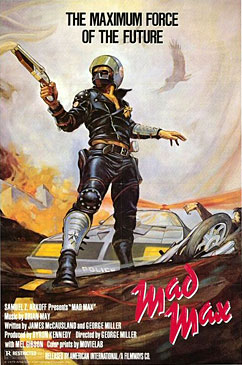 When I was in high school my favorite film was Road Warrior (1981). I think the reason that film appealed to me is that it presented a sort of nihilistic view of the near-future that I’ve always found interesting that was also being explored in films like Escape from New York (1981), The Terminator (1984) and Alien (1979). The main theme of these films seemed to be that the future might not be as great as we might have once imagined and that this bleak time could be here before we know it.
When I was in high school my favorite film was Road Warrior (1981). I think the reason that film appealed to me is that it presented a sort of nihilistic view of the near-future that I’ve always found interesting that was also being explored in films like Escape from New York (1981), The Terminator (1984) and Alien (1979). The main theme of these films seemed to be that the future might not be as great as we might have once imagined and that this bleak time could be here before we know it.
At the time I didn’t realize that Road Warrior was actually a sequel to the movie Mad Max (1979). And though back in high school I didn’t much care for Mad Max, lately I’ve come to realize that between the two Max Max is actually the superior film.
Mad Max takes place just “a few years from now” in and around some sparsely populated hamlets across the Australian Outback. The audience is never quite sure as to what’s going on in the outside world but it’s clear that things just aren’t right. Be it the police officers of the film, the “Main Force Patrol” (MFP), working out of what looks like an abandoned factory or an ominous highway sign that list how many people have recently been killed on that particular stretch of road – the visuals alone make the world of Mad Max seems dangerous and uninviting.
Worst of all of Mad Max are the roaming “road trash” motorcycle gangs who terrorize the countryside in their quest for kicks and fuel. And the only thing standing between these gangs and total anarchy is the MFP and their best officer Max (Mel Gibson in his first starring role).
Though by day Max may chase down these gangs on the highways he’s able to keep his professional life separate from his personal with a wife and son. That is until the day Max and the MFP take out a biker who’s stolen a police car which causes the rest of the biker’s gang to swear vengeance on the MFP and Max in particular.
First they start with Max’s best friend Jim Goose whom they find on the highway, wreck then burn alive and then in a heartbreaking scene literally run down Max’s wife and child on a lonely stretch of road. Max leaves the force, takes his gear and then goes off to the roads to extract vengeance on these bikers one by one.
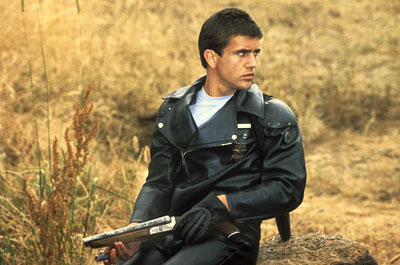 Considering that at its core Max Max looks to be a cheap road/motorcycle movie designed to appeal to a drive-in audience craving blood and action, the film is actually quite surreal. The visuals of a world falling apart through neglect and lack of spare parts combined with an element of homoeroticism running through the film all adds to this surreal quality.
Considering that at its core Max Max looks to be a cheap road/motorcycle movie designed to appeal to a drive-in audience craving blood and action, the film is actually quite surreal. The visuals of a world falling apart through neglect and lack of spare parts combined with an element of homoeroticism running through the film all adds to this surreal quality.
In Mad Max, several of the motorcycle gang members are gay, the biggest and meanest looking MFP member smokes cigars and seemingly wears ladies sunglasses and the MFP uniform that consists of tight black leather pants, a black leather jacket and leather gloves. This element is completely unexpected yet adds to the overall tone of a movie where things are just a little bit off. And I think it’s these small differences that add to the overall feeling of unease that runs throughout the film.
Also interesting is the title of the film. It both refers to “mad” as in “angry” but also as in “crazy.” One really does have to be crazy to do the sorts of things Max does to the bikers in this film.
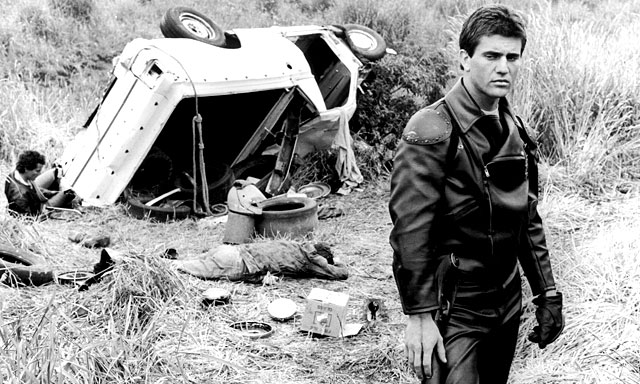
At it’s core, Mad Max asks the question of if a guy like Max does the right thing like killing a gang of bikers who’ve murdered their way across the countryside for the wrong reasons (cold-blooded revenge, going outside the bounds of a law he’s sworn to uphold…) is he still a good person? Can there ever be redemption for Max who’s essentially abandoned everything he’s once believed in and has adopted the “anything goes” code of the road?
Pray that he’s still out there—somewhere
The Road Warrior (Warrior) picks up a few years after the events of Mad Max. If the world of Mad Max was teetering on the brink of collapse then the world of Warrior has completely crumbled ruining whatever was left of civilization in the process.
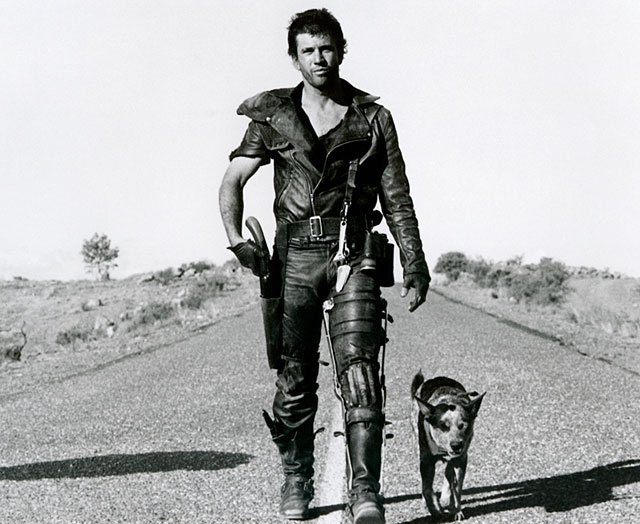
In Warrior, the gangs who threatened travelers on the highways of the Australian Outback of Mad Max now completely control them and instead of Max (Mel Gibson) being the one who chases down the roving gangs the roles have been reversed and he’s the one who’s chased. After the collapse, the only thing left of real value is gasoline and the highways are littered with the wrecked evidence of little wars fought over a gallon or two of fuel.
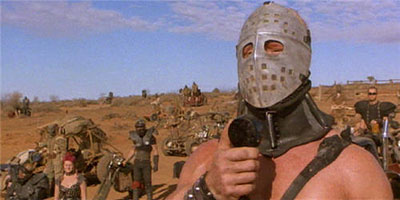 After a stunning ten minute opening sequence to the film where no words are spoken with Max driving for his life as he is is alternately chased, then chases a highway gang, Max stumbles upon a working oil refinery besieged by musclebound/hockey mask wearing “Humungus” and his hoards of minions all wanting into the refinery and at the gas. Max is able to sneak into the refinery and makes a deal with the people within. He’ll bring them back a semi that is capable of hauling the gasoline away if they’ll give him as much gas as he can carry in return.
After a stunning ten minute opening sequence to the film where no words are spoken with Max driving for his life as he is is alternately chased, then chases a highway gang, Max stumbles upon a working oil refinery besieged by musclebound/hockey mask wearing “Humungus” and his hoards of minions all wanting into the refinery and at the gas. Max is able to sneak into the refinery and makes a deal with the people within. He’ll bring them back a semi that is capable of hauling the gasoline away if they’ll give him as much gas as he can carry in return.
They agree and Max delivers. But before he can escape into the wastes Humungus’ hoards run Max down, destroy his car, shoot his dog and leave him for dead. Max is rescued and is brought back to the refinery where he volunteers to drive the semi out. The semi and its cargo of fuel will act as a decoy allowing the people living at the refinery time to escape. But is Max a good enough driver to race and beat Humungus’ hoards out into the Outback before they’re able to stop him?
If Mad Max was all about a character loosing himself in revenge then Warrior is about redemption. In Warrior, Max is presented as a man who’s not that much different that the members of Humungus’ murderous hoard. Though I never got the sense that Max would kill or take advantage of people who weren’t trying to kill or take advantage of him first; woe is the person good or evil to cross Max. In Warrior, Max kills when it’s needed, leaves people for dead and at one point uses a man who tried to steal fuel out of Max’s car as a sort of human pack animal.
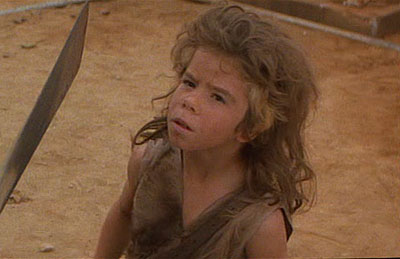 Except things change for Max when two events occur. First he meets a young feral boy living who lives with the people at the refinery but I suspect Max almost being killed out on the road had the biggest effect on the character. It’s almost as if with the young boy he’s able to reconnect to his normal life pre-collapse with a wife and son while I think Max’s near death experience made him realize that one way or another, be it doing good or bad, the hostile elements of the post-collapse world will eventually catch up and kill him. And Max is made to realize that in the end it’s probably better to be on the side of good than evil.
Except things change for Max when two events occur. First he meets a young feral boy living who lives with the people at the refinery but I suspect Max almost being killed out on the road had the biggest effect on the character. It’s almost as if with the young boy he’s able to reconnect to his normal life pre-collapse with a wife and son while I think Max’s near death experience made him realize that one way or another, be it doing good or bad, the hostile elements of the post-collapse world will eventually catch up and kill him. And Max is made to realize that in the end it’s probably better to be on the side of good than evil.
In a bit of a twist at the end of Warrior it turns out that the people of the refinery aren’t all good in that the semi they’ve sent Max out in to lead Humungus and his hoards away from their escape attempt was not filled with gasoline but instead was full of sand. They needed the fuel themselves to escape away from the refinery and figured that an outsider like Max was more expendable than of sacrificing one of their own.
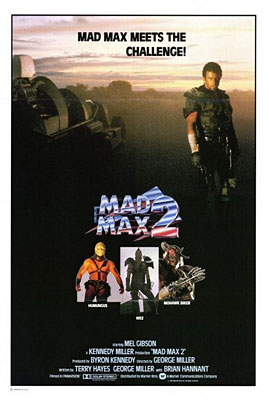 Still, this doesn’t take away the fact that at the end of Warrior, the character of Max has redeemed himself from the events of the first film.
Still, this doesn’t take away the fact that at the end of Warrior, the character of Max has redeemed himself from the events of the first film.
Interestingly enough, both Mad Max and Warrior were originally released a bit differently for American audiences than international ones. For years, the only version of Mad Max that was available here in the US was one where all the voices of the Australian actors were redubbed with American voice actors while in most of the rest of the English speaking world The Road Warrior is known as Mad Max 2. It wasn’t until recently that the original voices in Mad Max were restored to the US version of the film and the original title was recently added to the US Blu-ray version of the film.
There’s been talk of a fourth Mad Max film for the last decade and it wouldn’t surprise me in the least that in this world of movie remakes and reboots that we don’t see another Max film sooner than later.
Two Men Enter, One Man Leaves
If Mad Max (1979) film was about a man lost in revenge and The Road Warrior (1981) was about redemption then Mad Max Beyond Thunderdome (1985) must’ve been about Tina Turner, her golden pipes and a band of roguish children.
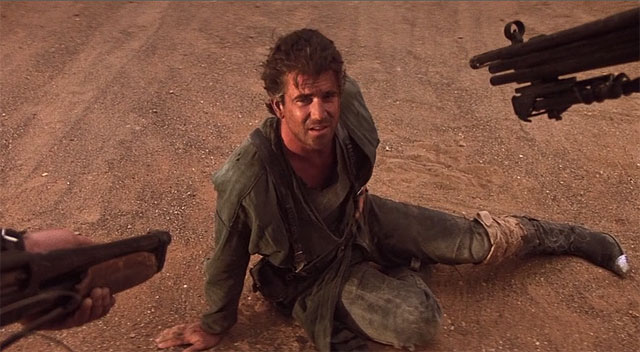
In Mad Max Beyond Thunderdome (Thunderdome), the world is on its last few drops of gasoline and Max is left to wander the wastes on a pickup pulled by camel team. After his ride is stolen out from under him by a flying father and son team of thieves, Max follows the tracks of his vehicle to Bartertown, the only settlement of any size for some distance. At Bartertown, travelers from all over trade with one and other and with Aunty Entity (Tina Turner) who runs Bartertown and its stable of pigs producing the only fuel around; methane gas. Realizing that Max is the toughest guy in town, Entity makes a deal with him to kill “Blaster,” a gigantic hulk of a man who carries little person “Master,” an all around smart-guy and Entity’s only rival in Batertown, around on his shoulders. Without Blaster, Master would be defenseless against Entity.
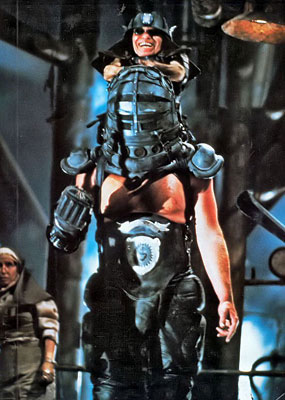 Max and Blaster face off in the caged Thunderdome, but after Max gets the upper hand and learns that Blaster is mentally disabled he refuses to finish the job and kill Blaster. Since Max has broken a deal with Entity, he’s banished to the desert wastes with no water and supplies.
Max and Blaster face off in the caged Thunderdome, but after Max gets the upper hand and learns that Blaster is mentally disabled he refuses to finish the job and kill Blaster. Since Max has broken a deal with Entity, he’s banished to the desert wastes with no water and supplies.
Entity is really my first real problem with the Thunderdome. Both Mad Max and The Road Warrior (Warrior) have clearly defined and scary bad guys. I wouldn’t want to tangle with the disheveled and all-around weirdo Toecutter (Hugh Keays-Byrne) from Mad Max and I’ve actually had nightmares over the hulking terror of the character Humungus (Kjell Nilsson) from Warrior. But in comparison, Aunty Entity isn’t nearly as menacing as either Keays-Byrne or Nilsson. In fact, one wonders if Turner’s role in the film isn’t more for her singing chops (arguably Turner’s song for the film “We Don’t Need Another Hero” was more of a hit than the film) than any acting chops.
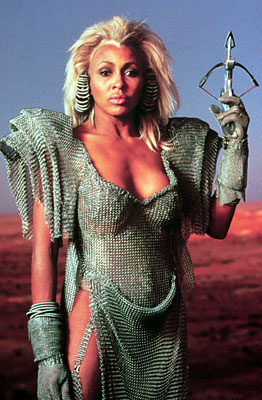 In the wastes, Max stumbles across an oasis inhabited by a group of feral children stranded there after a plane crash took the lives of all the adults. Left to their own devices, the kids have reverted to being a sort of primitive tribe and have made up their own mythos on the world using a mix of View-Master slides and the written etchings on a cliff-face left by the last dying adult. (Though how a group of “primitive” kids can read is another matter entirely.)
In the wastes, Max stumbles across an oasis inhabited by a group of feral children stranded there after a plane crash took the lives of all the adults. Left to their own devices, the kids have reverted to being a sort of primitive tribe and have made up their own mythos on the world using a mix of View-Master slides and the written etchings on a cliff-face left by the last dying adult. (Though how a group of “primitive” kids can read is another matter entirely.)
With the arrival of Max the kids believe that one of their prophecies have come true; that a man named Captain Walker, whom they assume to be Max, has come to take them home. But when Max can’t deliver, the kids expect that he can literally magically fly them away, some become disillusioned and decide it’s better to strike out on their own into the wastes rather than to wait for the return of Walker. But out in the wastes there’s really only Bartertown and Entity who’d be glad to add a few more laborers to her weird pig-mine and it’s up to Max to rescue them.
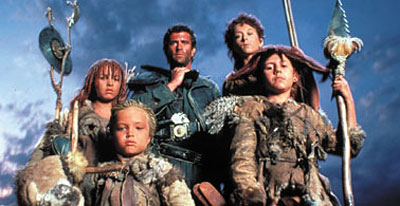 This whole bit with Max stumbling on the weird mix of kids seemingly pulled from Lord of the Flies with an odd mix of the lost boys from Peter Pan thrown is is where the movie falters again. With Warrior, the creators of the Mad Max series have already established that Max is once again part of humanity and the addition of these kids does little to add to the character of Max than to add a few odd sight gags to the Mad Max series.
This whole bit with Max stumbling on the weird mix of kids seemingly pulled from Lord of the Flies with an odd mix of the lost boys from Peter Pan thrown is is where the movie falters again. With Warrior, the creators of the Mad Max series have already established that Max is once again part of humanity and the addition of these kids does little to add to the character of Max than to add a few odd sight gags to the Mad Max series.
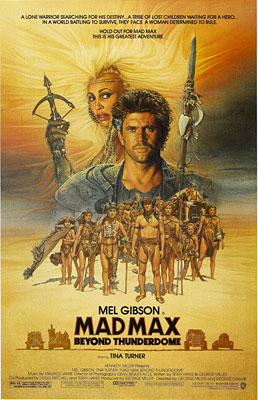 Other than Turner as Entity and the kids, what hurts Thunderdome the most is that it’s clearing trying to take the best-bits of Warrior (the refinery people in Warrior in need of rescue/ the kids at bartertown in need of saving in Thunderdome, the feral kid of Warrior/the tribe of feral kids Thunderdome, each film ends with a massive chase between Max and the baddies…) and make those pieces a little more tame and Hollywood friendly. But what the creators of Thunderdome ended up doing instead was to water down all the rough bits of Warrior and replace them with something a little more palatable and a lot less interesting.
Other than Turner as Entity and the kids, what hurts Thunderdome the most is that it’s clearing trying to take the best-bits of Warrior (the refinery people in Warrior in need of rescue/ the kids at bartertown in need of saving in Thunderdome, the feral kid of Warrior/the tribe of feral kids Thunderdome, each film ends with a massive chase between Max and the baddies…) and make those pieces a little more tame and Hollywood friendly. But what the creators of Thunderdome ended up doing instead was to water down all the rough bits of Warrior and replace them with something a little more palatable and a lot less interesting.
It doesn’t help matters with the film that in the end Max does fly a group of children away even if it’s under some clearly non-magical circumstances. Still, Thunderdome isn’t all bad. Where would we be without the most famous line from the film, “Two Men Enter, One Man Leaves?”
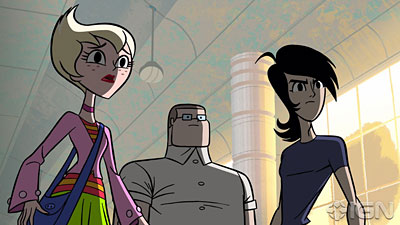
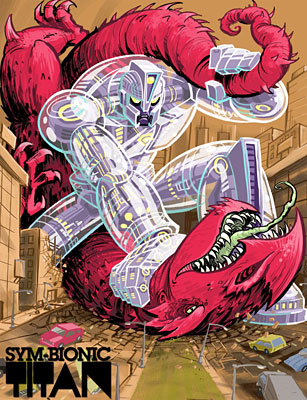
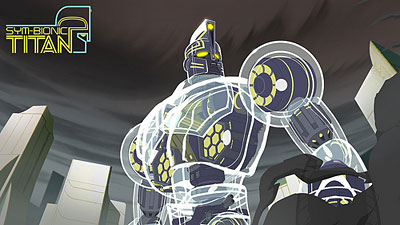
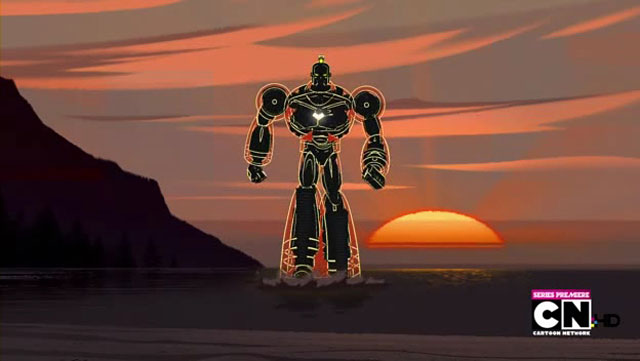
 When I was in high school my favorite film was Road Warrior (1981). I think the reason that film appealed to me is that it presented a sort of nihilistic view of the near-future that I’ve always found interesting that was also being explored in films like Escape from New York (1981), The Terminator (1984) and Alien (1979). The main theme of these films seemed to be that the future might not be as great as we might have once imagined and that this bleak time could be here before we know it.
When I was in high school my favorite film was Road Warrior (1981). I think the reason that film appealed to me is that it presented a sort of nihilistic view of the near-future that I’ve always found interesting that was also being explored in films like Escape from New York (1981), The Terminator (1984) and Alien (1979). The main theme of these films seemed to be that the future might not be as great as we might have once imagined and that this bleak time could be here before we know it. Considering that at its core Max Max looks to be a cheap road/motorcycle movie designed to appeal to a drive-in audience craving blood and action, the film is actually quite surreal. The visuals of a world falling apart through neglect and lack of spare parts combined with an element of homoeroticism running through the film all adds to this surreal quality.
Considering that at its core Max Max looks to be a cheap road/motorcycle movie designed to appeal to a drive-in audience craving blood and action, the film is actually quite surreal. The visuals of a world falling apart through neglect and lack of spare parts combined with an element of homoeroticism running through the film all adds to this surreal quality.

 After a stunning ten minute opening sequence to the film where no words are spoken with Max driving for his life as he is is alternately chased, then chases a highway gang, Max stumbles upon a working oil refinery besieged by musclebound/hockey mask wearing “Humungus” and his hoards of minions all wanting into the refinery and at the gas. Max is able to sneak into the refinery and makes a deal with the people within. He’ll bring them back a semi that is capable of hauling the gasoline away if they’ll give him as much gas as he can carry in return.
After a stunning ten minute opening sequence to the film where no words are spoken with Max driving for his life as he is is alternately chased, then chases a highway gang, Max stumbles upon a working oil refinery besieged by musclebound/hockey mask wearing “Humungus” and his hoards of minions all wanting into the refinery and at the gas. Max is able to sneak into the refinery and makes a deal with the people within. He’ll bring them back a semi that is capable of hauling the gasoline away if they’ll give him as much gas as he can carry in return. Except things change for Max when two events occur. First he meets a young feral boy living who lives with the people at the refinery but I suspect Max almost being killed out on the road had the biggest effect on the character. It’s almost as if with the young boy he’s able to reconnect to his normal life pre-collapse with a wife and son while I think Max’s near death experience made him realize that one way or another, be it doing good or bad, the hostile elements of the post-collapse world will eventually catch up and kill him. And Max is made to realize that in the end it’s probably better to be on the side of good than evil.
Except things change for Max when two events occur. First he meets a young feral boy living who lives with the people at the refinery but I suspect Max almost being killed out on the road had the biggest effect on the character. It’s almost as if with the young boy he’s able to reconnect to his normal life pre-collapse with a wife and son while I think Max’s near death experience made him realize that one way or another, be it doing good or bad, the hostile elements of the post-collapse world will eventually catch up and kill him. And Max is made to realize that in the end it’s probably better to be on the side of good than evil. Still, this doesn’t take away the fact that at the end of Warrior, the character of Max has redeemed himself from the events of the first film.
Still, this doesn’t take away the fact that at the end of Warrior, the character of Max has redeemed himself from the events of the first film.
 Max and Blaster face off in the caged Thunderdome, but after Max gets the upper hand and learns that Blaster is mentally disabled he refuses to finish the job and kill Blaster. Since Max has broken a deal with Entity, he’s banished to the desert wastes with no water and supplies.
Max and Blaster face off in the caged Thunderdome, but after Max gets the upper hand and learns that Blaster is mentally disabled he refuses to finish the job and kill Blaster. Since Max has broken a deal with Entity, he’s banished to the desert wastes with no water and supplies. In the wastes, Max stumbles across an oasis inhabited by a group of feral children stranded there after a plane crash took the lives of all the adults. Left to their own devices, the kids have reverted to being a sort of primitive tribe and have made up their own mythos on the world using a mix of View-Master slides and the written etchings on a cliff-face left by the last dying adult. (Though how a group of “primitive” kids can read is another matter entirely.)
In the wastes, Max stumbles across an oasis inhabited by a group of feral children stranded there after a plane crash took the lives of all the adults. Left to their own devices, the kids have reverted to being a sort of primitive tribe and have made up their own mythos on the world using a mix of View-Master slides and the written etchings on a cliff-face left by the last dying adult. (Though how a group of “primitive” kids can read is another matter entirely.) This whole bit with Max stumbling on the weird mix of kids seemingly pulled from Lord of the Flies with an odd mix of the lost boys from Peter Pan thrown is is where the movie falters again. With Warrior, the creators of the Mad Max series have already established that Max is once again part of humanity and the addition of these kids does little to add to the character of Max than to add a few odd sight gags to the Mad Max series.
This whole bit with Max stumbling on the weird mix of kids seemingly pulled from Lord of the Flies with an odd mix of the lost boys from Peter Pan thrown is is where the movie falters again. With Warrior, the creators of the Mad Max series have already established that Max is once again part of humanity and the addition of these kids does little to add to the character of Max than to add a few odd sight gags to the Mad Max series. Other than Turner as Entity and the kids, what hurts Thunderdome the most is that it’s clearing trying to take the best-bits of Warrior (the refinery people in Warrior in need of rescue/ the kids at bartertown in need of saving in Thunderdome, the feral kid of Warrior/the tribe of feral kids Thunderdome, each film ends with a massive chase between Max and the baddies…) and make those pieces a little more tame and Hollywood friendly. But what the creators of Thunderdome ended up doing instead was to water down all the rough bits of Warrior and replace them with something a little more palatable and a lot less interesting.
Other than Turner as Entity and the kids, what hurts Thunderdome the most is that it’s clearing trying to take the best-bits of Warrior (the refinery people in Warrior in need of rescue/ the kids at bartertown in need of saving in Thunderdome, the feral kid of Warrior/the tribe of feral kids Thunderdome, each film ends with a massive chase between Max and the baddies…) and make those pieces a little more tame and Hollywood friendly. But what the creators of Thunderdome ended up doing instead was to water down all the rough bits of Warrior and replace them with something a little more palatable and a lot less interesting.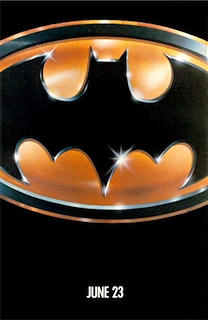 It’s difficult for anyone born after the fact to realize just how HUGE the original
It’s difficult for anyone born after the fact to realize just how HUGE the original 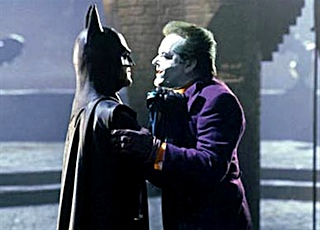 Others I asked about their own Batman experience related that they remember standing in line in the hot Sun waiting for show time. We didn’t have that problem as we arrived at the showing a few minutes AFTER the movie had started only to find ourselves faced with a completely packed theater. And when I say “packed” I mean PACKED. We were all separated by flashlight wielding ushers and had to take whatever lone seats were available scattered throughout the theater.
Others I asked about their own Batman experience related that they remember standing in line in the hot Sun waiting for show time. We didn’t have that problem as we arrived at the showing a few minutes AFTER the movie had started only to find ourselves faced with a completely packed theater. And when I say “packed” I mean PACKED. We were all separated by flashlight wielding ushers and had to take whatever lone seats were available scattered throughout the theater.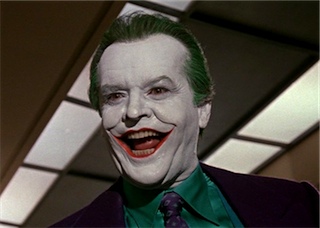 Our family got our tape Christmas day and I must have watched it four or five times in a row that afternoon.
Our family got our tape Christmas day and I must have watched it four or five times in a row that afternoon.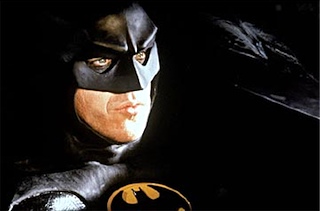 Batman Returns and a long running animated series would follow in 1992. But sadly, after that it was downhill from there for the Batman franchise until Christopher Nolan would resuscitate the character with Batman Begins (2005) and ultimately The Dark Knight that would go onto become one of the top grossing films of all time.
Batman Returns and a long running animated series would follow in 1992. But sadly, after that it was downhill from there for the Batman franchise until Christopher Nolan would resuscitate the character with Batman Begins (2005) and ultimately The Dark Knight that would go onto become one of the top grossing films of all time.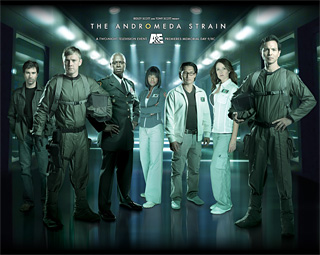 At the end of this month, the cable channel A&E will premiere a two-part remake of the film
At the end of this month, the cable channel A&E will premiere a two-part remake of the film 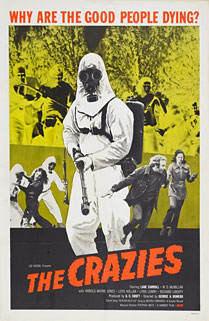 In this film, the team of government agents is presented as altruistic with the single goal of eliminating the virus no matter the personal or political toll. This concept would be turned on its head in the George Romero film
In this film, the team of government agents is presented as altruistic with the single goal of eliminating the virus no matter the personal or political toll. This concept would be turned on its head in the George Romero film  The Andromeda Strain wasn’t the first film to present the idea that something tiny might arrive from space to threaten humanity. The title creature of
The Andromeda Strain wasn’t the first film to present the idea that something tiny might arrive from space to threaten humanity. The title creature of 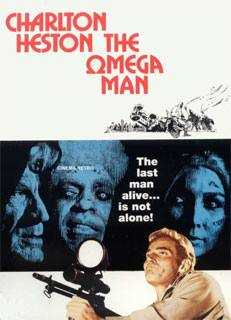 Except the military should be careful what viruses they choose to keep.
Except the military should be careful what viruses they choose to keep. 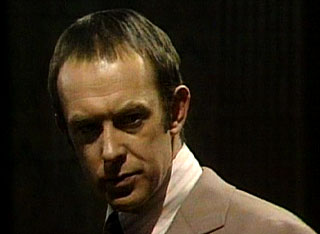 Back in the 1970s, the world existed someplace between the tensions of the Cold War and the possibility of a nuclear war. On one side was NATO, lead by the US, and the other the Warsaw Pact lead by the Soviet Union. Though these two “superpowers” weren’t involved in a traditional shooting war, there was a covert war being fought along the edges of the Cold War. This is where the characters of the television series The Sandbaggers operated.
Back in the 1970s, the world existed someplace between the tensions of the Cold War and the possibility of a nuclear war. On one side was NATO, lead by the US, and the other the Warsaw Pact lead by the Soviet Union. Though these two “superpowers” weren’t involved in a traditional shooting war, there was a covert war being fought along the edges of the Cold War. This is where the characters of the television series The Sandbaggers operated.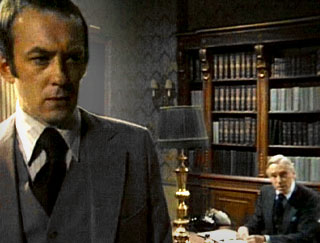 Differing from contemporary (and even modern) television shows, The Sandbaggers was written in a gritty, realistic style. From the sheer terror of a Sandbagger being wounded and all alone behind enemy lines to Burnside constantly fighting his superiors to make sure the Sandbaggers have a fighting chance to survive their jobs, stories in The Sandbaggers had an air of extreme realism. It’s hard to believe that a show as well written as The Sandbaggers existed alongside contemporaries of the time like The Incredible Hulk, Dallas and The Six Million Dollar Man. Even today, episodes of The Sandbaggers makes programs like 24 look positively juvenile in comparison.
Differing from contemporary (and even modern) television shows, The Sandbaggers was written in a gritty, realistic style. From the sheer terror of a Sandbagger being wounded and all alone behind enemy lines to Burnside constantly fighting his superiors to make sure the Sandbaggers have a fighting chance to survive their jobs, stories in The Sandbaggers had an air of extreme realism. It’s hard to believe that a show as well written as The Sandbaggers existed alongside contemporaries of the time like The Incredible Hulk, Dallas and The Six Million Dollar Man. Even today, episodes of The Sandbaggers makes programs like 24 look positively juvenile in comparison.